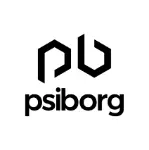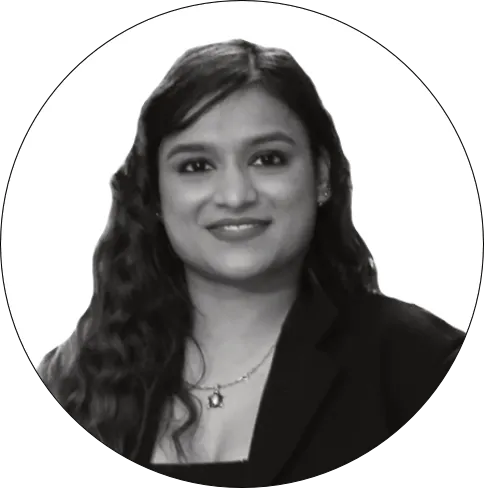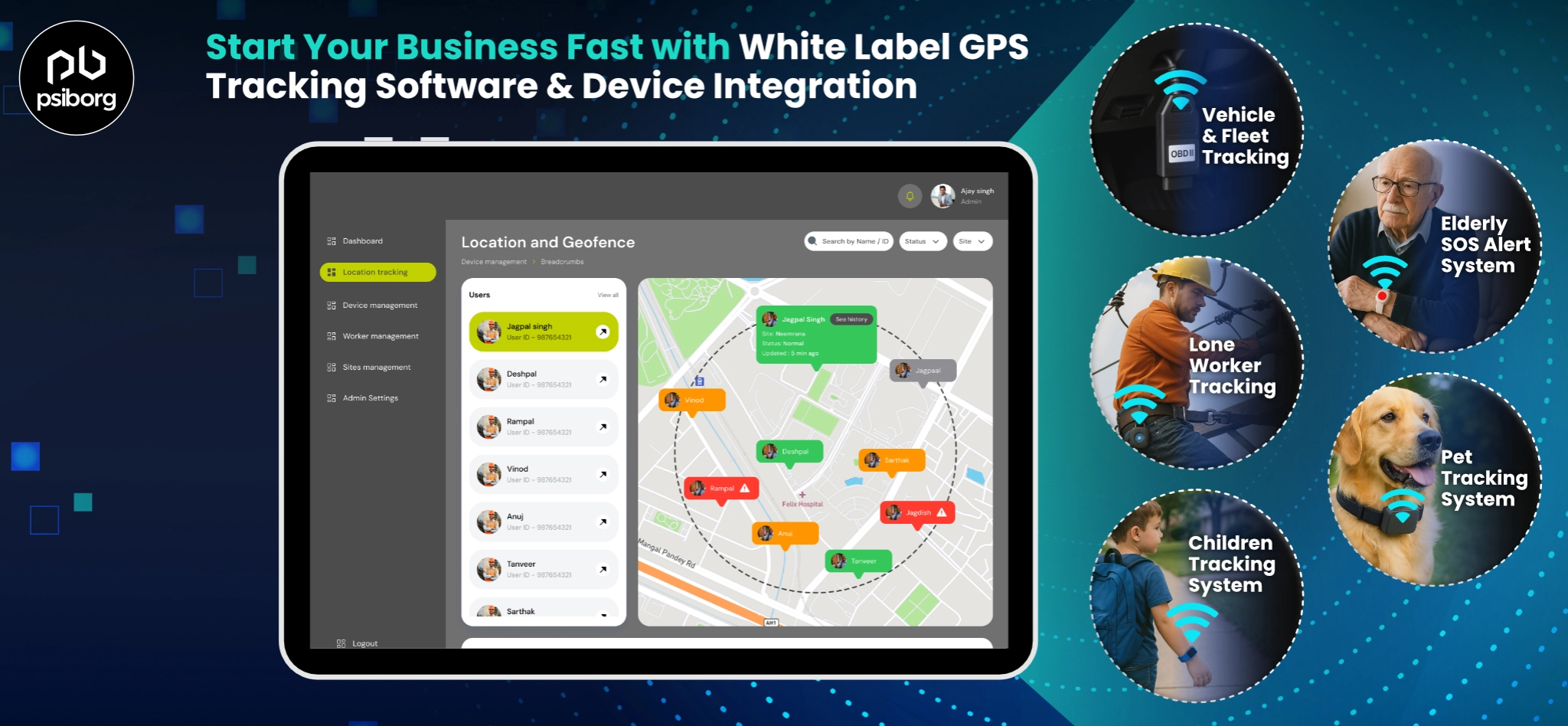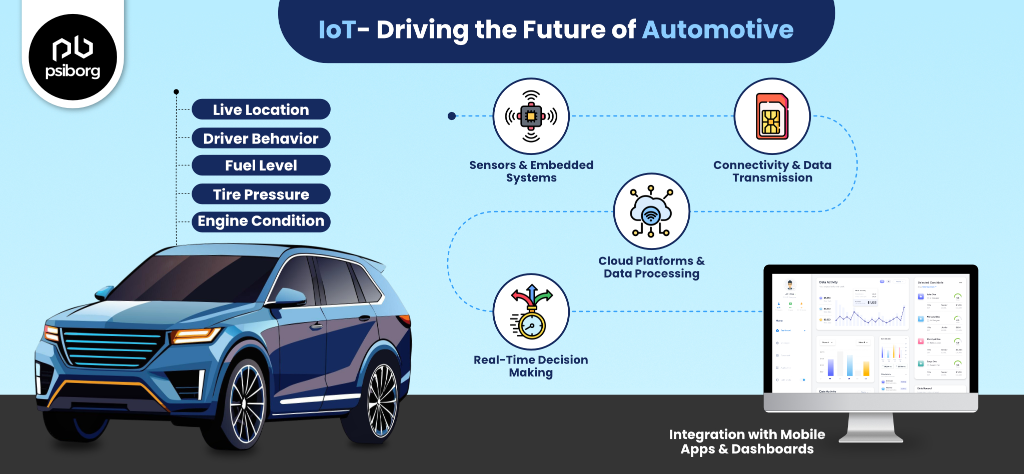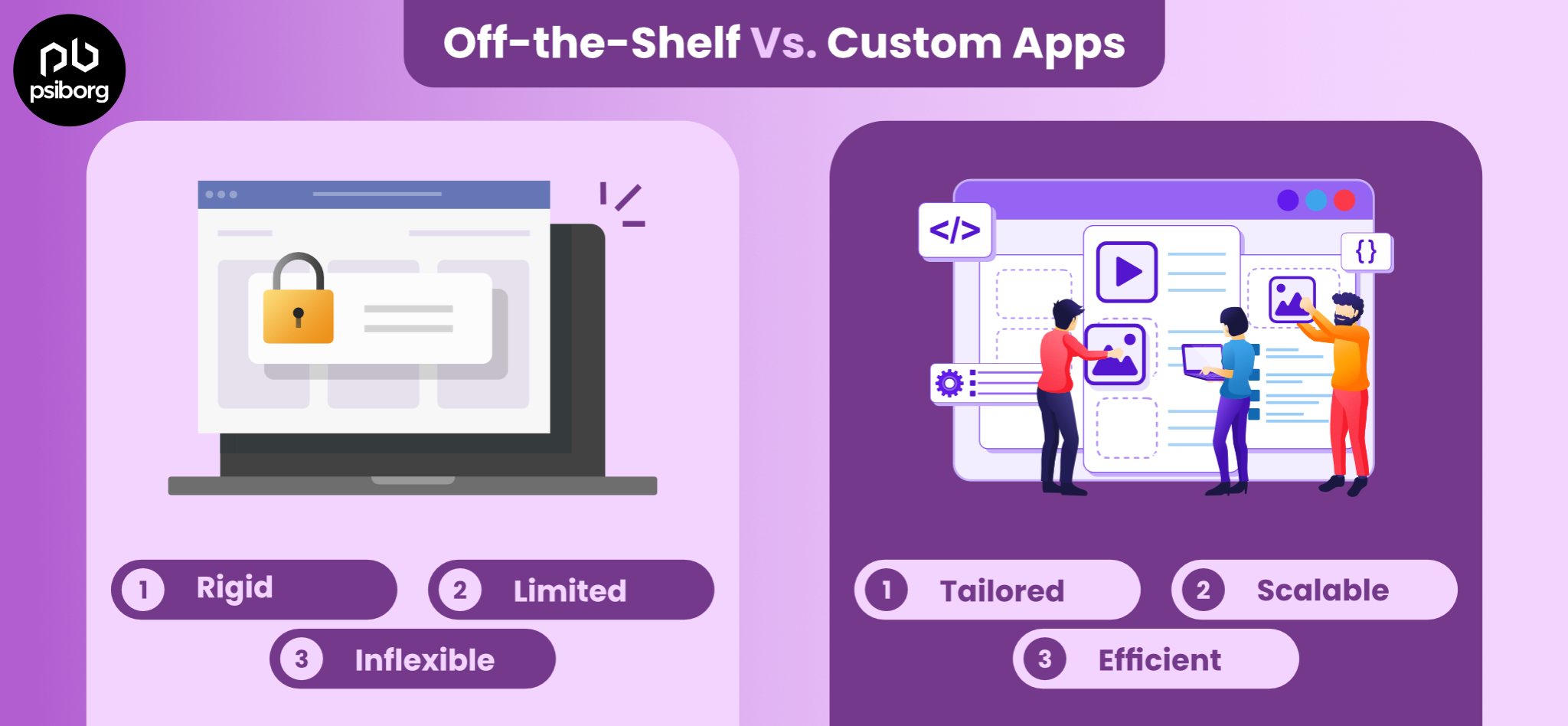As the title of the blog suggests, it is about the role of sensors in Chandrayaan-3. You all probably know about Chaandrayan-3, but do you know the relationship between Chaandrayan-3 and sensors or what role the Internet of Things plays in the mission of Chaandrayaan-3?
On July 14, India’s most anticipated lunar mission, “Chaandrayaan-3” launched into space from the Satish Dhawan Space Centre in Sriharikota and will land on the moon on August 23. Chandrayaan-3 is the pride of Bharat for its space mission, and we Indians, indeed the whole world, are eagerly waiting for August 23.
Although sensors play a very important role in Chandrayaan-3, as an IoT-service-providing company, we obviously cannot talk about Chandrayaan-3 without talking about sensors
So let’s start by understanding the relationship between Chandrayaan-3 and sensors, and the types of sensors used in the Chandrayaan-3 mission. But first,
WHAT ARE SENSORS?
Sensors are the cornerstone of the IoT ecosystem, as they are used in the architecture of IoT devices.
In simple words, sensors are used to sense the devices. The sensors collect physical inputs and convert them into electrical, mechanical, or optical signals. Here, the output is a signal that is converted into a human-readable form.
For instance, smart biometric lockers sense your fingerprint, process the data, and open the locker for you.
The sensors can be classified as
- Passive sensors (e.g.: accelerometers, soil moisture, and temperature sensors)
- Active sensors (e.g.: Radar and sounder sensors)
- Analog sensors (e.g.: analog pressure sensor, LDR, temperature sensor)
- Digital sensors (e.g.: PIR sensors and Digital temperature sensors)
- Scalar sensors (e.g.: color, smoke, gas, strain sensor)
- Vector sensors (e.g.: gyroscope, motion detector, and magnetic field sensor)
CHANDRAYAAN-3 AND SENSORS: HOW SENSORS WILL HELP US EXPLORE THE MOON?
Chandrayan-3 contains a Propulsion module, a Lander, and a Rover.
The propulsion module carries the Lander and Rover setup till 100kms lunar orbit. The lander is capable of soft landing at a specific lunar site, and it will release the rover, which will carry out in-situ chemical analysis on the lunar surface.
The propulsion module is equipped with the Spectropolarimetry of Habitable Planet Earth (SHAPE) payload. It is a remote-sensing payload that will study the spectral and polarimetric measurements of the Earth from lunar orbit.
The Vikram Lander is equipped with the following sensors:
- Laser Inertial Referencing and Accelerometer Package (LIRAP)
- Ka-Band Altimeter (KaRA)
- Lander Position Detection Camera (LPDC)
- Lander Hazard Detection and Avoidance Camera (LHDAC)
- Laser Altimeter (LASA)
- Laser Doppler Velocimeter (LDV)
- Lander Horizontal Velocity Camera (LHVC)
- Micro-Star Sensor
- Inclinometers and Touchdown Sensors
Let’s understand this relationship between Chandrayaan-3 and sensors in depth:
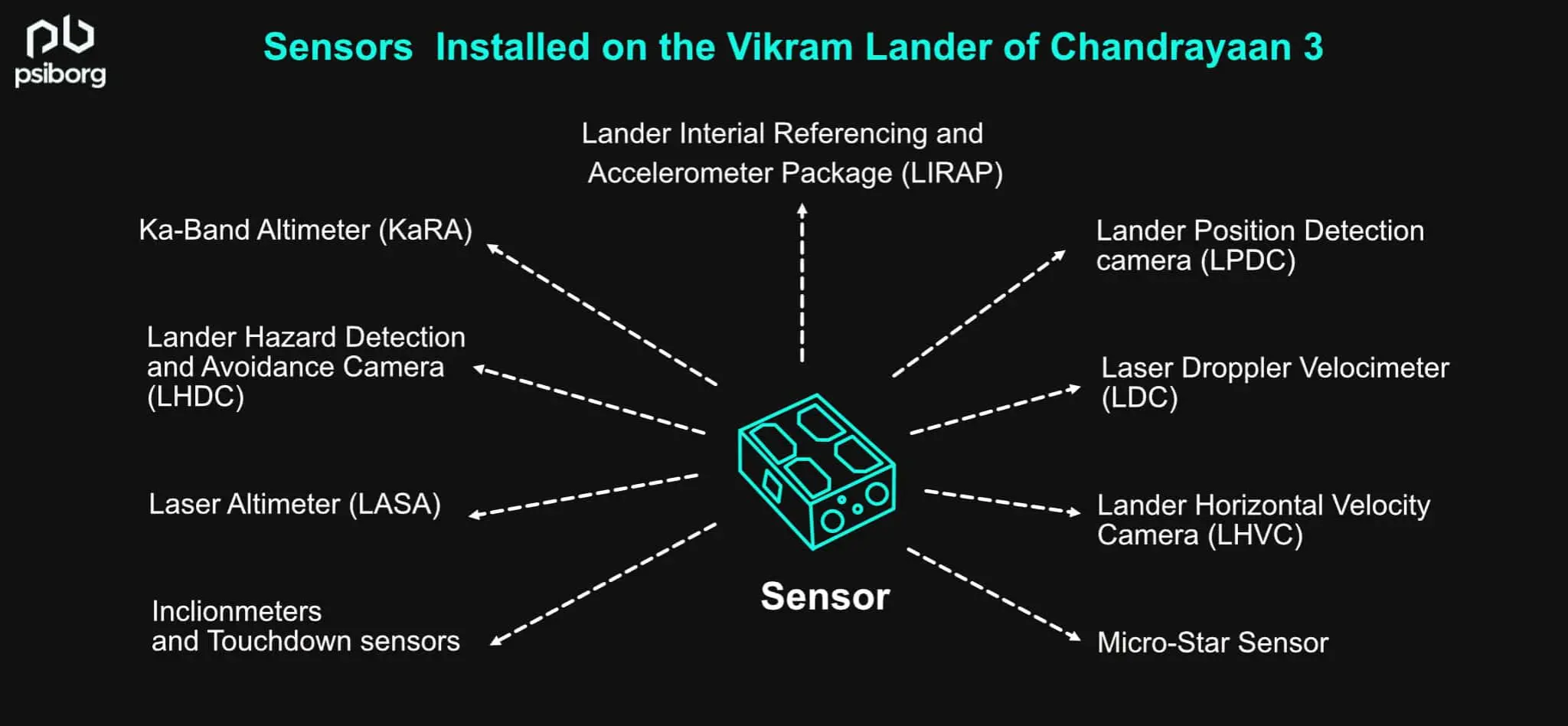
LASER INERTIAL REFERENCING AND ACCELEROMETER PACKAGE (LIRAP)
This package includes inertial sensors, which use gyroscopes and accelerometers. Its role is to determine a moving rover’s change in rotational attitude and translational position.
Basically, these sensors measure movement in multiple axes. The accelerometer measures a changing acceleration on the sensor. The inertial referencing unit can also be used commonly, even in mobile devices and automobiles.
KA-BAND ALTIMETER (KARA)
Ka-Band Radar Altimeter is used for remote sensing of the topography of the surface. Here, KA stands for Kurtz- Above Band. The Kurtz band is a part of the microwave band in the electromagnetic spectrum.
KARA measures the altitude above the terrain by timing how long it takes a beam of radio waves to travel to the ground, reflect, and return back to the craft. This way, the altimeter gives the distance between the antenna and the ground below it.
Nevertheless, in the Vikram Lander, there are two KaRA- KA Band Altimtere-1 and KA Band Altimeter-2.
LANDER POSITION DETECTION CAMERA (LPDC)
It must be clear from the name, it’s a position-detection camera. During landing, the Lander Position Detection Camera (LPDC) is switched on to determine the perfect position for Vikram Lander to sit comfortably.
LANDER HAZARD DETECTION AND AVOIDANCE CAMERA (LHDAC)
The LHDAC uses Lidar (Light Detection and Ranging) sensors, camera sensors, and knowledge of lander motion to detect a hazard-free surface in real-time at the time of descent. LHDAC ciphers several hazard-related properties of the terrain, like the slope, roughness, illumination, and propellant cost of reaching the site.
A single hazard map is created for each landing site to assess its safety, using the obtained information.
Additionally, the Hazard Detection and Avoidance (HDA) system recommends a safe landing site based on the assessment.
LASER ALTIMETER (LASA)
LASA stands for “Lidar Atmospheric Sounder and Altimeter.” A laser altimeter is used to map the terrain of a planet. The height of the surface is determined by comparing the time it takes for a laser pulse to return to the sensor at different locations.
To be more clear, LASA determines the topography/shape of a planet’s surface. LASA is operated by the orbiter, which orbits the moon above the lander.
LANDER HORIZONTAL VELOCITY CAMERA (LHVC)
LHVC is a velocity camera installed to take high-quality images of the Earth and Moon from space. LHVC took all of the images that ISRO published after the launch of Chandrayaan-3.
[The Lander Position Detection Camera (LPDC), Lander Horizontal Velocity Camera (LHVC), Lander Hazardous Detection Avoidance (LHDA), and KaRA ensure the soft landing of the Vikram Lander on the lunar surface.]
LASER DOPPLER VELOCIMETER (LDV)
The Laser Doppler Velocimeter sensor can help study the lunar surface by utilizing laser technology that will measure different velocity components. The LDV sensor is a new addition to the Chandrayaan-3, to improve the accuracy of measurements and provide backup in case any issue arises. LDV sends a monochromatic laser beam toward the target and collects the reflected radiation.
It is an optical technique for measuring the velocity of the fluid flow.
MICRO-STAR SENSOR
The micro-star sensors provide attitude information by measuring star coordinates in the lander frame and comparing them to know star directions obtained from a star collection.
Micro-star sensors are also considered the most accurate sensors for determining attitude.
INCLINOMETERS AND TOUCHDOWN SENSORS
The inclinometer sensor is a tilt detection center that detects the magnitude of slope, tilt, elevation, or depression of an object in relation to gravity. Touchdown sensors indicate whether or not a touchdown has occurred on a surface.
IOT IN SPACE: HOW IOT IS USED IN CHANDRAYAAN-3
Vikram Lander is a good example of IoT in space.
All these sensors are part of Chandrayan-3, making it possible for Vikram Lander to land smoothly on the moon’s surface and thus create history.
No doubt IoT is playing a big role in the success of Chandrayaan-3 in a number of ways, be it-
- Remote monitoring and control
- Automated decision making
- Improved communication and,
- Enhanced situational awareness.
Here’s an example of how IoT plays a major role in Chandrayaan-3:
IoT sensors
In addition to monitoring the health of the spacecraft’s engines and batteries, they also monitor the health of the spacecraft’s other vital systems. This is useful to ensure that the spacecraft is operating accurately and efficiently.
IoT devices
IoT devices are used to transmit data from the spacecraft’s sensors and cameras to Earth. The received data allows us to track the spacecraft and determine the progress of the lunar study.
Automation
Navigation and communication systems on spacecraft are extensively automated using the Internet of Things.
Automation is a way to optimize a task and make it more efficient.
(Do read our blog on supermarket automation, office automation, and home automation app development to get more insights on how automation can reduce costs and improve productivity.)
TO SUM UP,
The above list includes only some of the important sensors used in the Vikram Lander.
The Chaandrayaan-3 spacecraft is equipped with a variety of other sensors that enable it to fulfill its mission of lunar exploration
The use of IoT in Chandrayaan-3 is a significant milestone in Indian Space Exploration.
We can say that Chandrayaan-3 and its sensors will together help us explore the moon and make India a leading spacefaring nation
Besides, when IoT devices and sensors are making space exploration smarter, safer, and more efficient, imagine what else you can achieve with the Internet of Things.
IoT is the smarter answer to all your problems.
To learn more about IoT applications, reach out to us!
